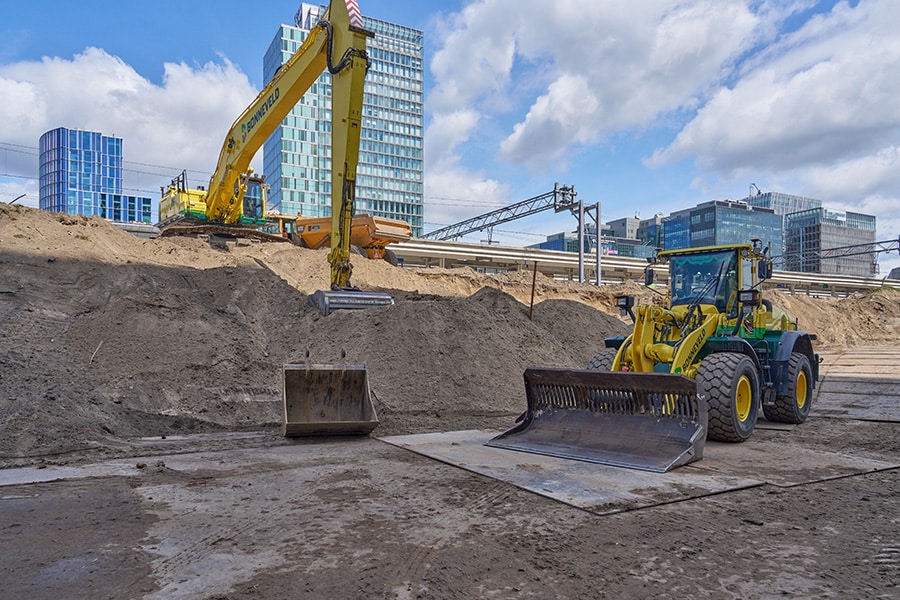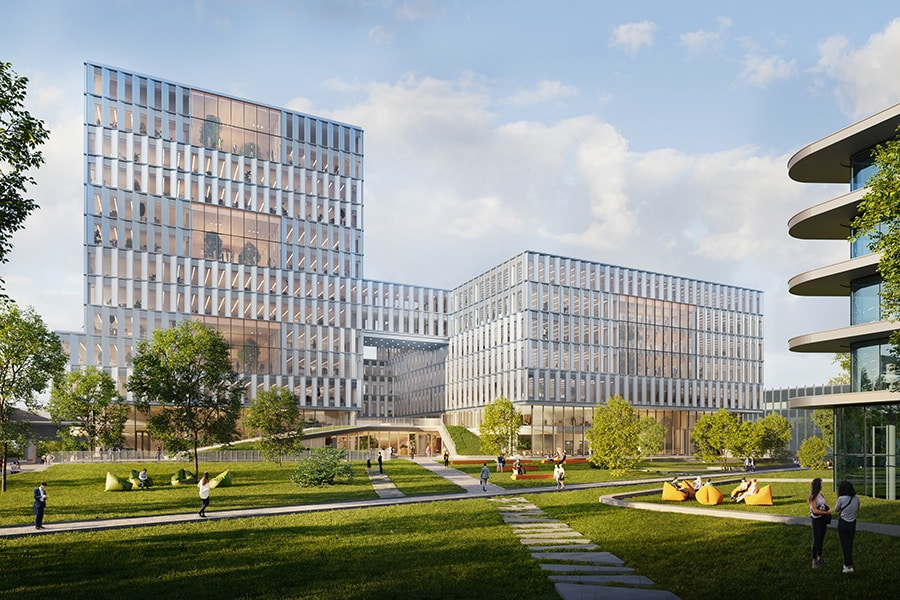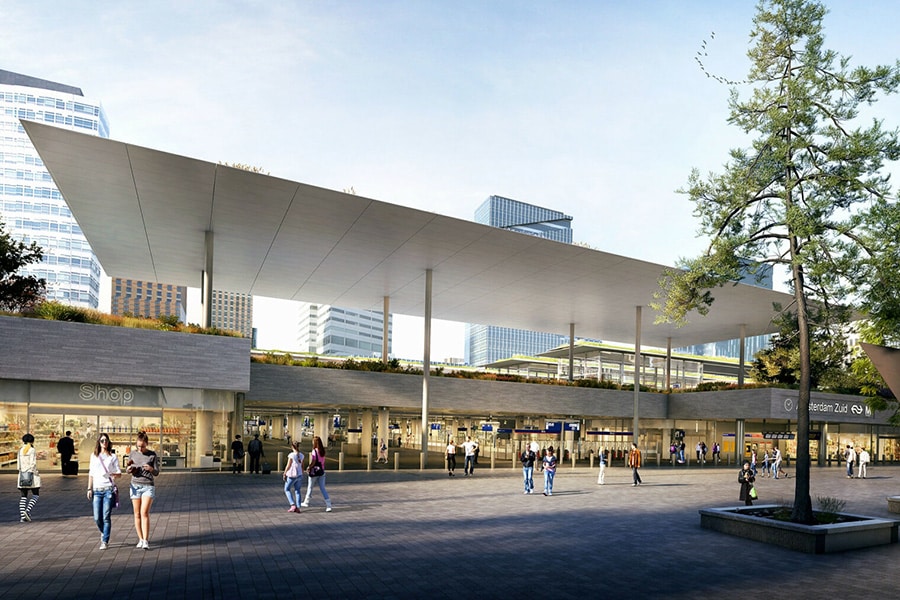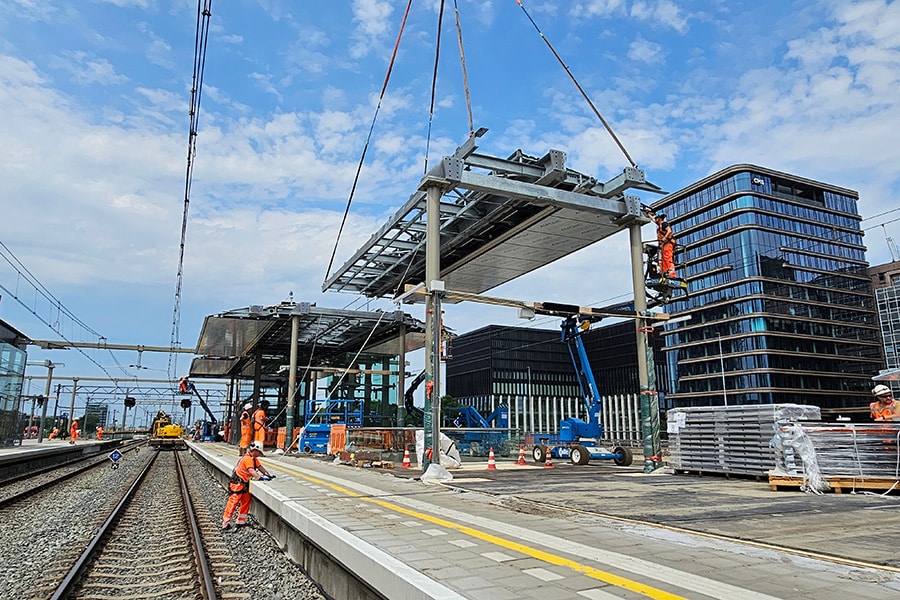
Willem Witsen Wonen | The Hague
Willem Witsen Wonen, a 'surprising building'
In a prime location in the stately Benoordenhout district of The Hague, on Willem Witsenplein, the former office building of the Octrooiraad is being completely transformed. 54 luxury apartments and four penthouses are being realized in the building, which falls under protected cityscape. A project with surprises.
A completely gutted structure it is now, part of which has also been demolished. But in the third quarter of 2019, an upscale apartment complex of 8,934 m² GBO will stand here with homes ranging from 77 to 226 m². Jaco Noordam, project manager at BAM Wonen, is convinced of that. "Including the penthouses, there will be a total of seven floors and five entrances, each with its own portico in which an elevator and stairwell will be realized. Only the former main entrance will remain authentic. One of the entrance areas is completely new, the rest will be renewed. Furthermore, each apartment has a different layout. For example, there are even ten maisonettes on the first floor with the entrance on the second floor. At the rear of the u-shaped building there will be parking for residents, as well as a beautiful courtyard garden."

Authentic staircase.
State of affairs
Currently, everything has been remediated and 95 percent of the demolition work is complete. The facades have been cleaned, the masonry is being repaired, and one-third of the aluminum facade frames have been installed. Noordam expects nearly all interior steel structures to be completed by the end of 2018, including the load-bearing masonry and concrete structures. "In early 2019, we will complete the somewhat smaller things. For example, we will put down parts of the sand-lime walls that still need to be installed, and we will install the roof floor. From February 2019 we will start the finishing work, so that completion can take place from the third quarter."
Surprises
The fact that no new building was erected here has everything to do with the fact that the 1933 building is a protected townscape. Therefore, the facade image and the corresponding appearance had to be maintained. This was quite a challenge, as the design for the transformation was based on archive drawings. Because of the structural surprises that came to light, the architect and structural engineer had to make several changes. Says Noordam, "We also had to adjust the planning in order to keep the construction time as short as possible. For example, we discovered concrete beams of 1.5 meters high that were not on the drawing, a total of about twelve cubic feet. If you left those in place you'd bang your head in your own apartment."

Former main entrance is preserved.
Elevators
The building had other surprises in store. The demolition of almost all interior walls required stability provisions. It was then decided to partially install the residential separating sand-lime brick walls during the demolition phase already, making separate temporary stability provisions unnecessary. The last part of these walls will be realized once the elevators are finally completed. Since these are not there yet, this presents a logistical challenge. In order not to have to walk too far during construction, the passenger elevator was set up centrally in the courtyard. From there, all parts of the building are easily accessible. "Another challenge of a logistical nature is the location of the building on a through road and two narrow streets, which means that large trucks cannot be supplied. Therefore, just-in-time work is being done. We have made temporary traffic arrangements to minimize inconvenience to local residents and make construction possible. Despite the sometimes bumpy process, everything will definitely work out, especially thanks to the excellent cooperation with all parties," said Noordam.



